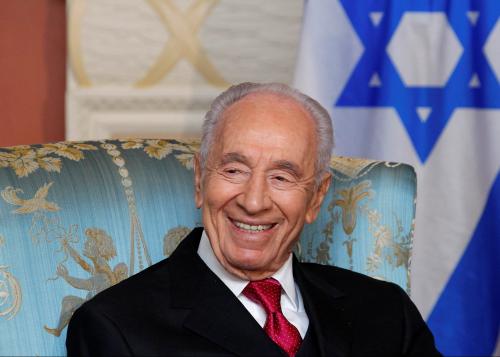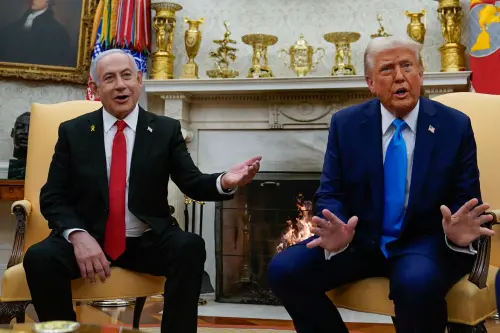In 1984, the Israeli economy was in dire straits: it had an annualized inflation of about 400 percent (and even 1,000 percent in the second half of 1984); a budget deficit of about 17 percent of the gross domestic product; and a current account deficit—driven by massive capital outflows—which drove down foreign reserves, and with it reducing the likelihood that Israel would be able to service its external debt obligations.
Israel held elections in July 1984 and, after a few months, Shimon Peres formed a national unity government together with the Likud party. The new national unity government was based on a rotational agreement in which Peres would be the prime minister for the first two years of the term. Needless to say, the economy needed a quick and effective fix.
Peres gathered a team of bright of economists, led by Michael Bruno, to put together what became known as the “Economic Stabilization Program,” which mixed free market solutions and price controls to bring down inflation rates. The plan, which went into effect in June 1985, had three main components: a sharp reduction of the fiscal budget deficit by about 7.5 percent of GDP (mainly by reducing food subsidies); a devaluation of the Israeli shekel by 20 percent; and the freeze of all shekel-denominated aggregates: wages, prices, and nominal exchange rate, with pre-established adjustments. This came alongside a sharp increase in interest rates, at the risk of getting the country into a deep recession.
Peres had a unique ability to get different sectors of the Israeli society to agree to a social contract that would control inflation by aligning future price expectations. Peres was a master negotiator: he was able to reach an agreement with the Histradrut (Israel’s largest labor union) to put in place a wage freeze with pre-established monthly increments that were aligned with the government’s inflationary goals.
He also, with the help of the U.S. government, put together an advisory board of American economists (Stanley Fischer, who later became the Governor of Israel’s Central Bank, was one). Peres got emergency aid from the U.S. government to the tune of about $750 million a year (about 3.5 percent of GDP at the time) for the following two years, conditional on reforms. In a Peterson Institute for International Economics paper, Fischer recalls Peres’ skills as a negotiator while describing the creation of the American advisory group:
“The group came to life in October 1984 when Shimon Peres visited Washington as the new Prime Minister. He arrived with the newspapers saying that he was not coming to ask for aid. I was teaching and couldn’t make it to the meeting, but Herb Stein, together with whom I had the pleasure of working throughout this period, and from whom I learned a great deal, was there. Herb called later to report on the meeting and said ‘You know, for a guy who didn’t come to ask for aid, he did pretty well.”
Finally, Peres was quick and assertive in getting his plan passed in government. From its design, it was clear that it could be a very unpopular plan because it could generate sharp increase in unemployment. But Peres went for it, and got his cabinet approval in a night-long meeting, after a lot of political maneuvering.
[H]istory speaks for itself: the reforms were tremendously successful.
Some historians would argue that the design and implementation of the stabilization plan was one of the most important successes in Peres’ decades-long political career. And history speaks for itself: the reforms were tremendously successful. Monthly inflation rates fell considerably, from 11 percent in the third quarter of 1985 to just 1 percent a year later. The unemployment rate—which all feared would spike—increased only by about 2 percentage points.
The novel mix of orthodox and heterodox policies, as Stanley Fischer has written, may have been the key element of success for Israel’s Economic Stabilization Program. Other countries during similar economic crises, such as Argentina and Brazil, implemented plans that included similar heterodox elements, such as defining nominal anchors in prices and wages to battle inflation. As of today, Israel’s unprecedented success in bringing down hyperinflation and stabilizing the economy in 1985 is often highlighted in university classrooms.
Since 1985, Israel has enjoyed many years of economic growth. Today, Israel is a member of the OECD—a selected group of developed nations—and the country is recognized as an innovation and entrepreneurship paradise, perhaps second only to Silicon Valley. As Israel and the world mourns Shimon Peres for his vision, his statesmanship, and his peace-making efforts, he should also be remembered as the implementer of one of the most successful economic stabilization programs in modern history. Peres laid the groundwork for the start-up nation we know today.
The Brookings Institution is committed to quality, independence, and impact.
We are supported by a diverse array of funders. In line with our values and policies, each Brookings publication represents the sole views of its author(s).







Commentary
How Shimon Peres saved the Israeli economy
September 30, 2016